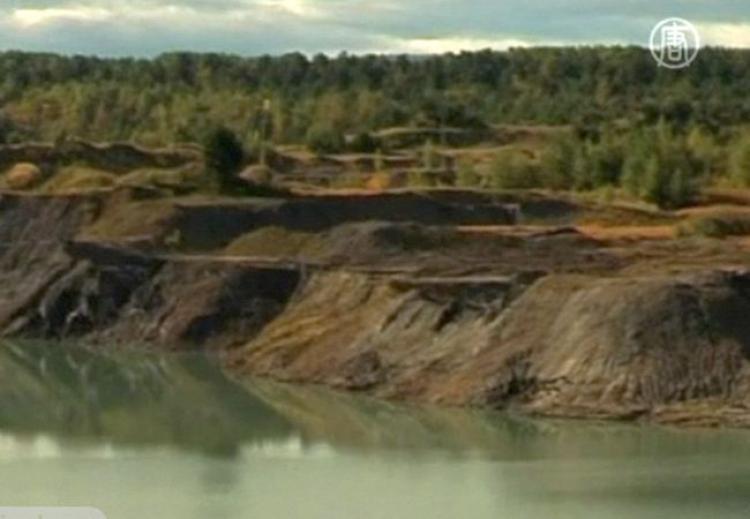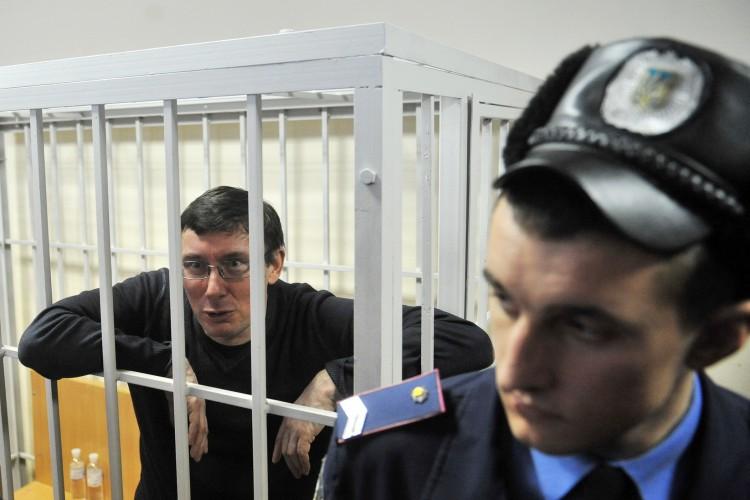Ukraine early this week started transferring toxic waste, whose containers are starting to degrade, to England for treatment, before it leads to a large ecological catastrophe in Europe.
The small town of Kalush is much like other ones in the Ivano Frankovsk region of the Western Ukraine, but in terms what is buried at its outskirts is a toxic time bomb created long ago by a former potassium-processing factory in the heart of Ukrainian chemical production.
Although the factory has been closed for about 15 years, what is left on the plant’s site is the Dombrovsky reservoir, which contains several hundred million cubic feet of toxic wastewater, and a dump site where more than 11,000 tons of toxic sludge containing benzene hexachloride was buried.
Ukrainian officials have recently given the area emergency status due to increasing concerns that spring flooding may have brought the tainted waste to nearby lakes, and eventually to the Dniester River that covers most of the Ukraine and parts of Moldavia.
There is still a real threat that the toxic waste water could stream into nearby lakes which are the tributaries of the Dniester, as the chemical wastes in the reservoir are eating away the dam that separates the toxic site from the aquifers.
The process of removing the benzene hexachloride started this week. It will be transported to Britain over the next 3 months, where it will be destroyed.
Benzene hexachloride, which as been linked to cancer, is a persistent organic pollutant and highly dangerous material, and dissolves gradually over time.
It has been documented by local authorities that people living in the area have higher rates of cancer, and other diseases.
Thousands of water bags of the toxic material were buried into the nearby ground. The bags have long gone bad, and now the leaking toxin is penetrating into the earth. The last burial/disposal of the material took place in 2000.
“Ecologists and medical doctors have already found it in the waste water and drainage systems,” said Andrey Lubimov, the director of the state’s “National Center for Hazardous Waste Management,” New Tang Dynasty TV reported.
“This says that water is washing away a part of this material [buried into the ground] so far and it goes to ground water aquifers,” he added.
Ukrainian authorities have allocated about $40 million to help the waste be delivered to the United Kingdom.
The window to deal with the leaking chemicals is limited. After mining in the region, there are a lot of empty spaces left—nkempt salt mines, and collapses take place from time to time.
“If collapses reach this ground, it all falls down. So Europe just … what happened in the United States when Gulf of Mexico was contaminated by oil, it will be a tale if compared to what may happen after benzene hexachloride’s spread,” Lubimov concluded.
The small town of Kalush is much like other ones in the Ivano Frankovsk region of the Western Ukraine, but in terms what is buried at its outskirts is a toxic time bomb created long ago by a former potassium-processing factory in the heart of Ukrainian chemical production.
Although the factory has been closed for about 15 years, what is left on the plant’s site is the Dombrovsky reservoir, which contains several hundred million cubic feet of toxic wastewater, and a dump site where more than 11,000 tons of toxic sludge containing benzene hexachloride was buried.
Ukrainian officials have recently given the area emergency status due to increasing concerns that spring flooding may have brought the tainted waste to nearby lakes, and eventually to the Dniester River that covers most of the Ukraine and parts of Moldavia.
There is still a real threat that the toxic waste water could stream into nearby lakes which are the tributaries of the Dniester, as the chemical wastes in the reservoir are eating away the dam that separates the toxic site from the aquifers.
The process of removing the benzene hexachloride started this week. It will be transported to Britain over the next 3 months, where it will be destroyed.
Benzene hexachloride, which as been linked to cancer, is a persistent organic pollutant and highly dangerous material, and dissolves gradually over time.
It has been documented by local authorities that people living in the area have higher rates of cancer, and other diseases.
Thousands of water bags of the toxic material were buried into the nearby ground. The bags have long gone bad, and now the leaking toxin is penetrating into the earth. The last burial/disposal of the material took place in 2000.
“Ecologists and medical doctors have already found it in the waste water and drainage systems,” said Andrey Lubimov, the director of the state’s “National Center for Hazardous Waste Management,” New Tang Dynasty TV reported.
“This says that water is washing away a part of this material [buried into the ground] so far and it goes to ground water aquifers,” he added.
Ukrainian authorities have allocated about $40 million to help the waste be delivered to the United Kingdom.
The window to deal with the leaking chemicals is limited. After mining in the region, there are a lot of empty spaces left—nkempt salt mines, and collapses take place from time to time.
“If collapses reach this ground, it all falls down. So Europe just … what happened in the United States when Gulf of Mexico was contaminated by oil, it will be a tale if compared to what may happen after benzene hexachloride’s spread,” Lubimov concluded.






